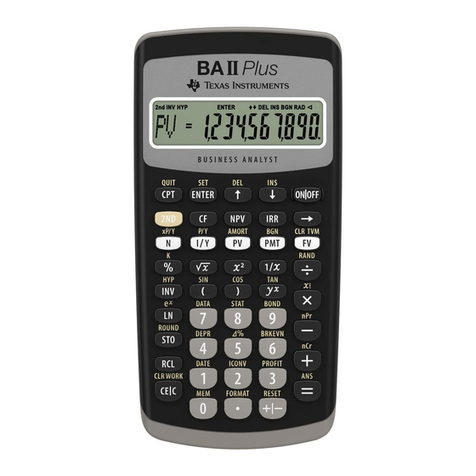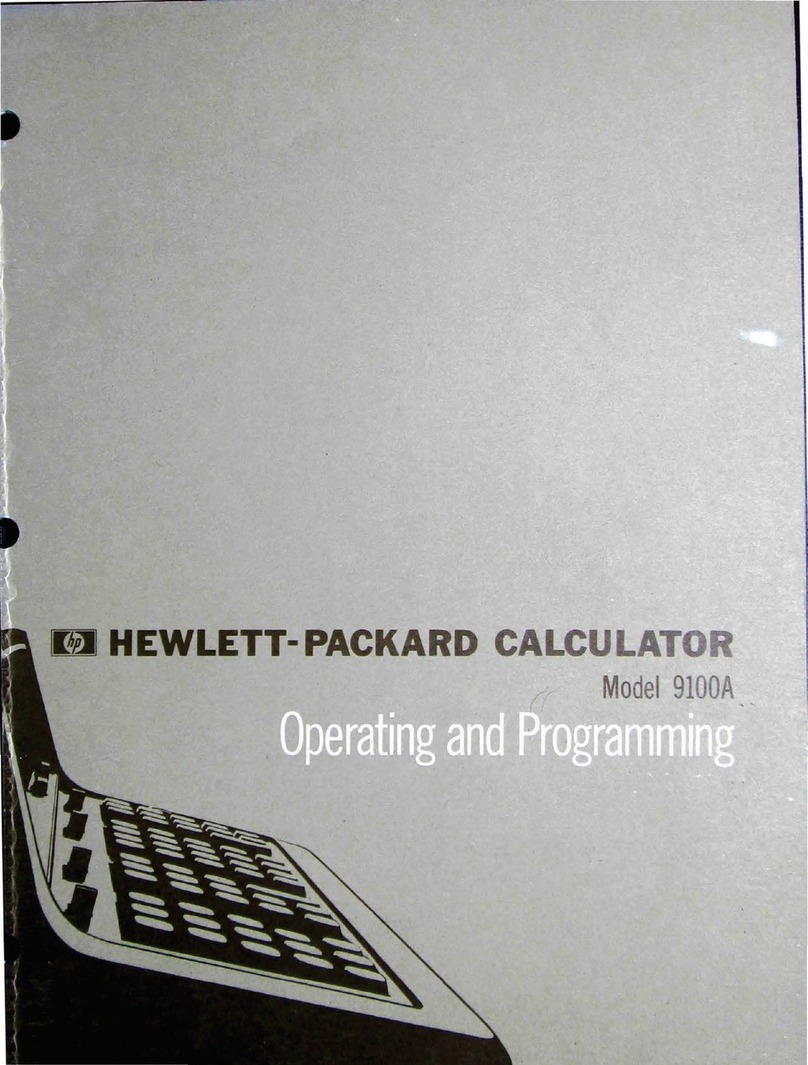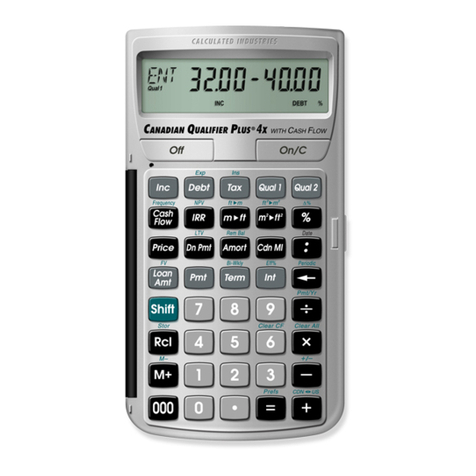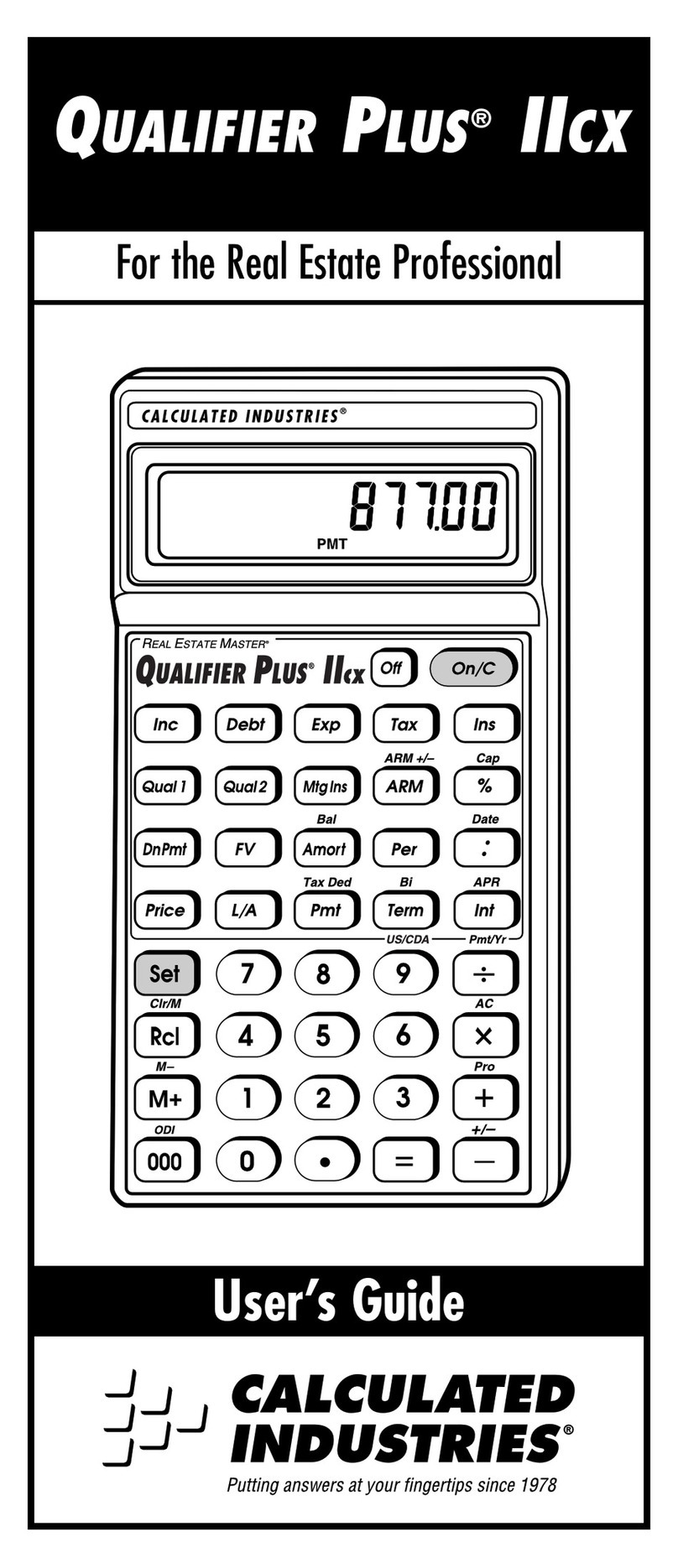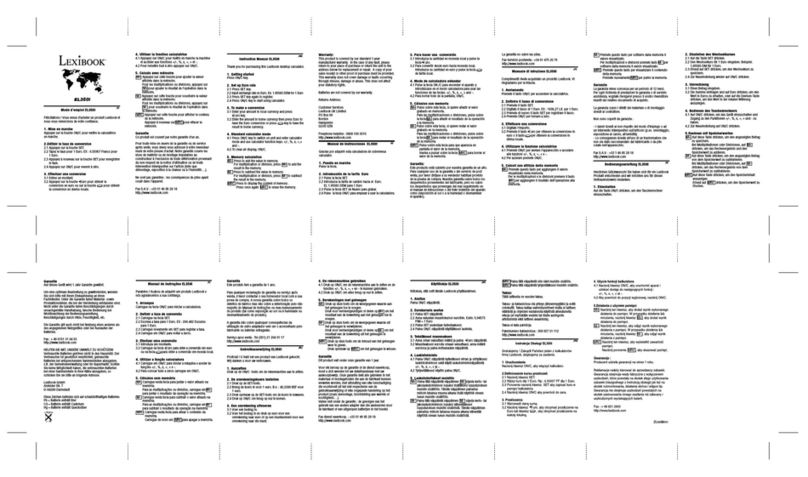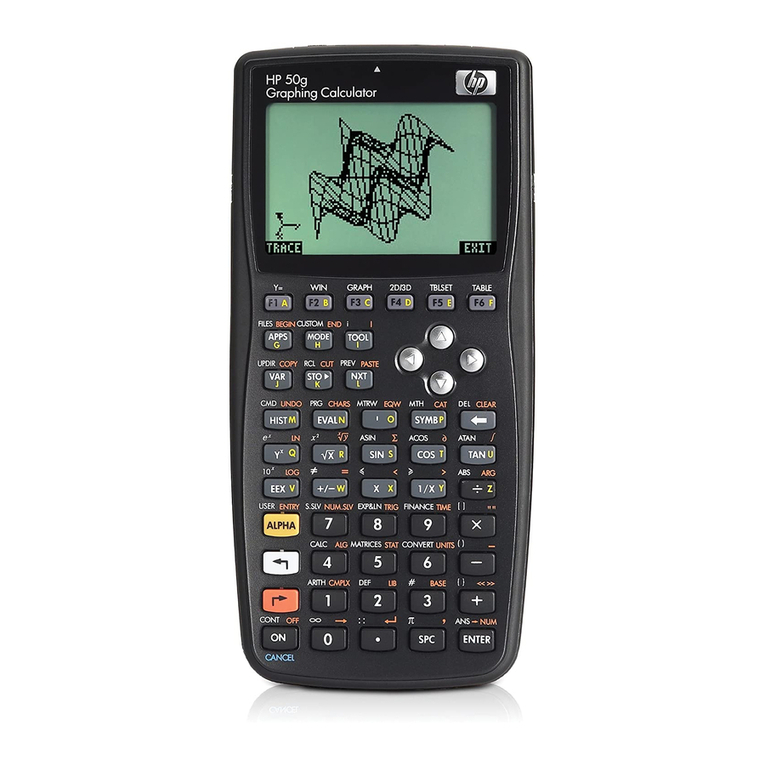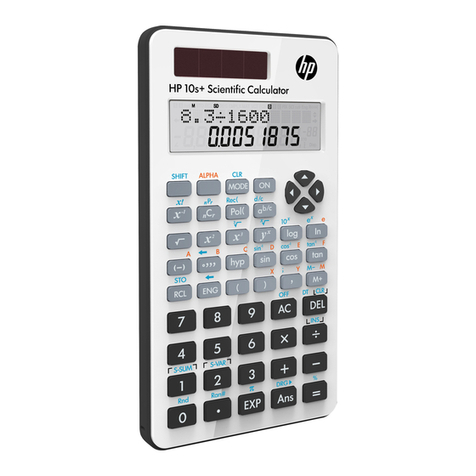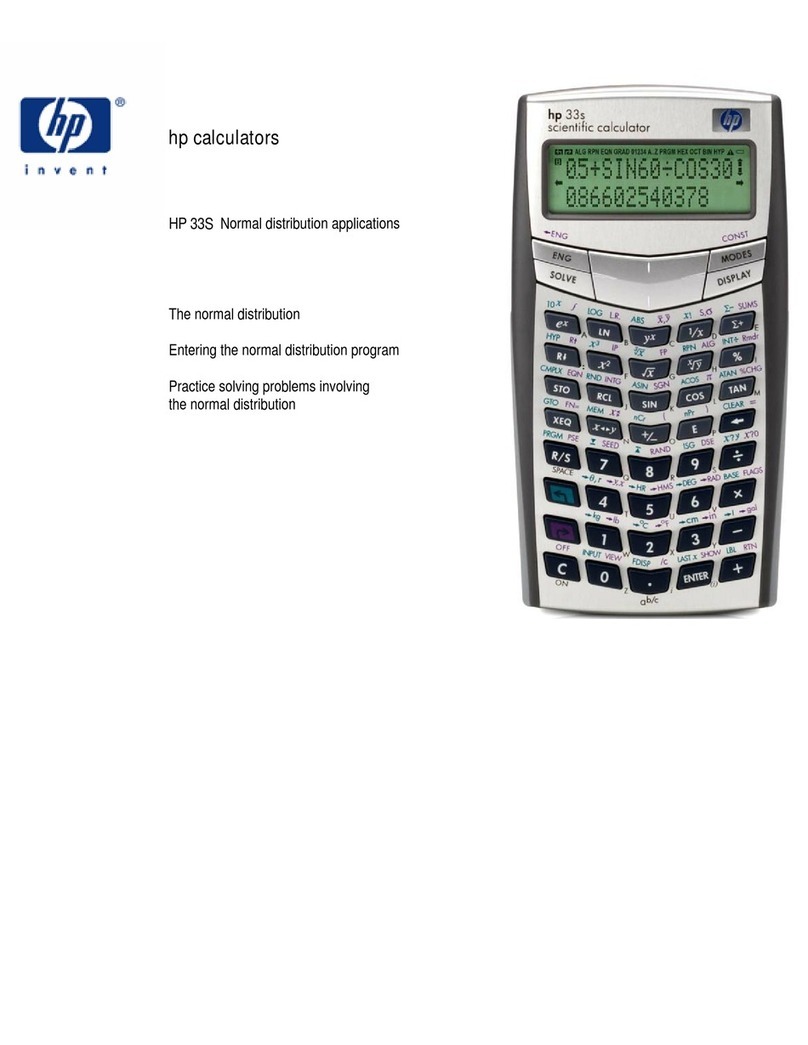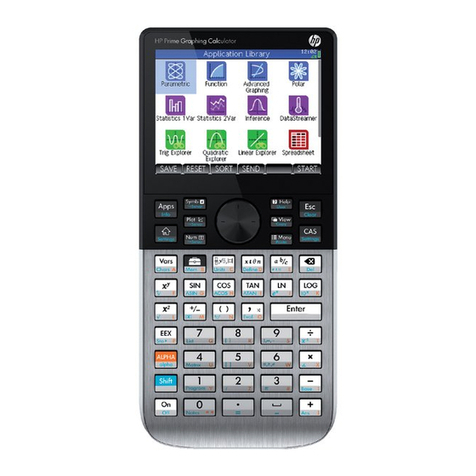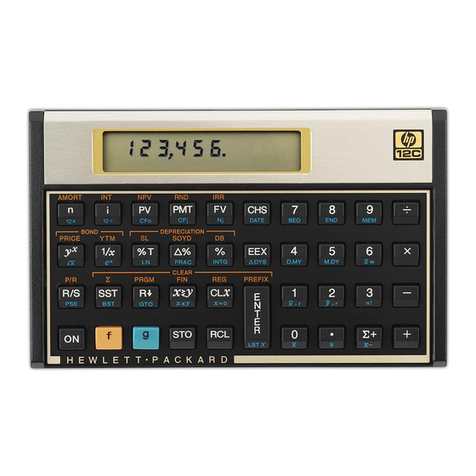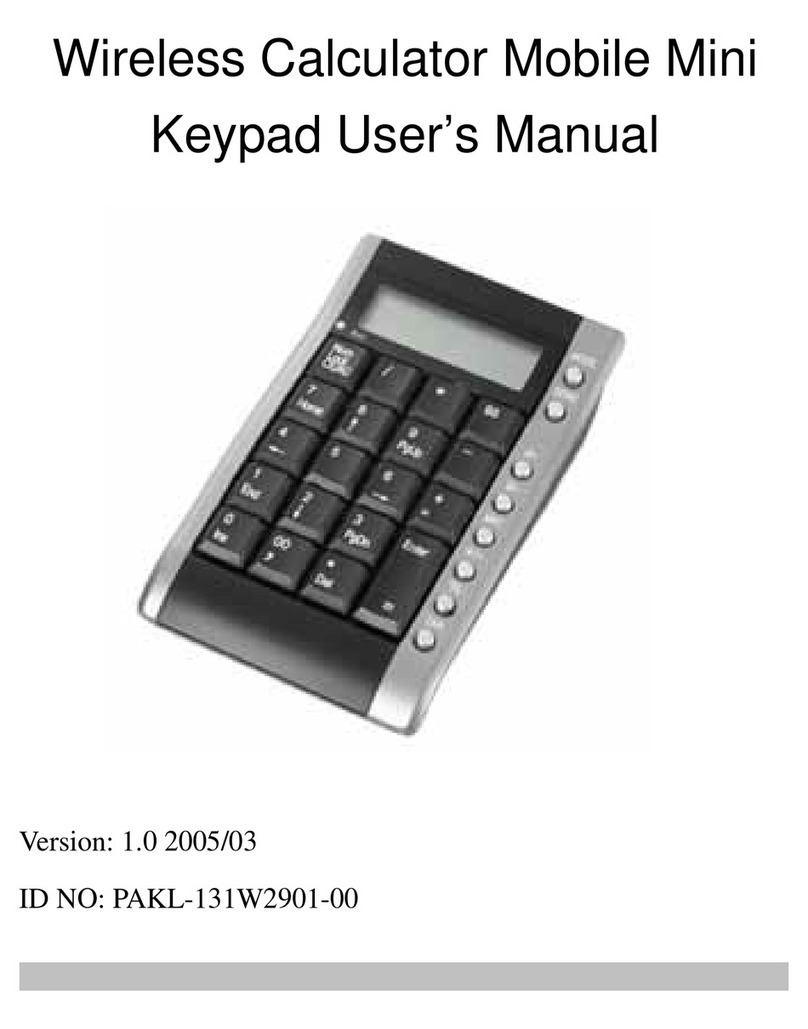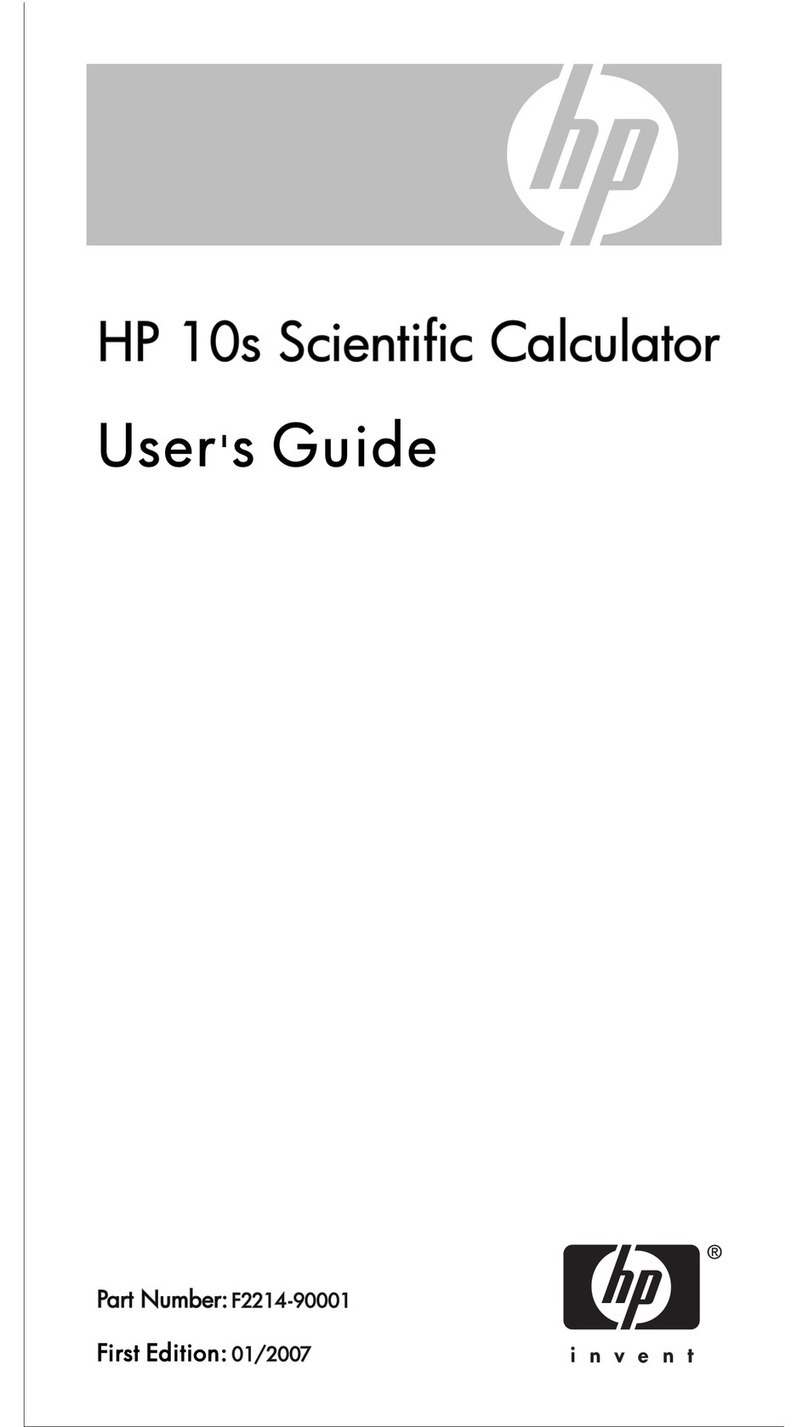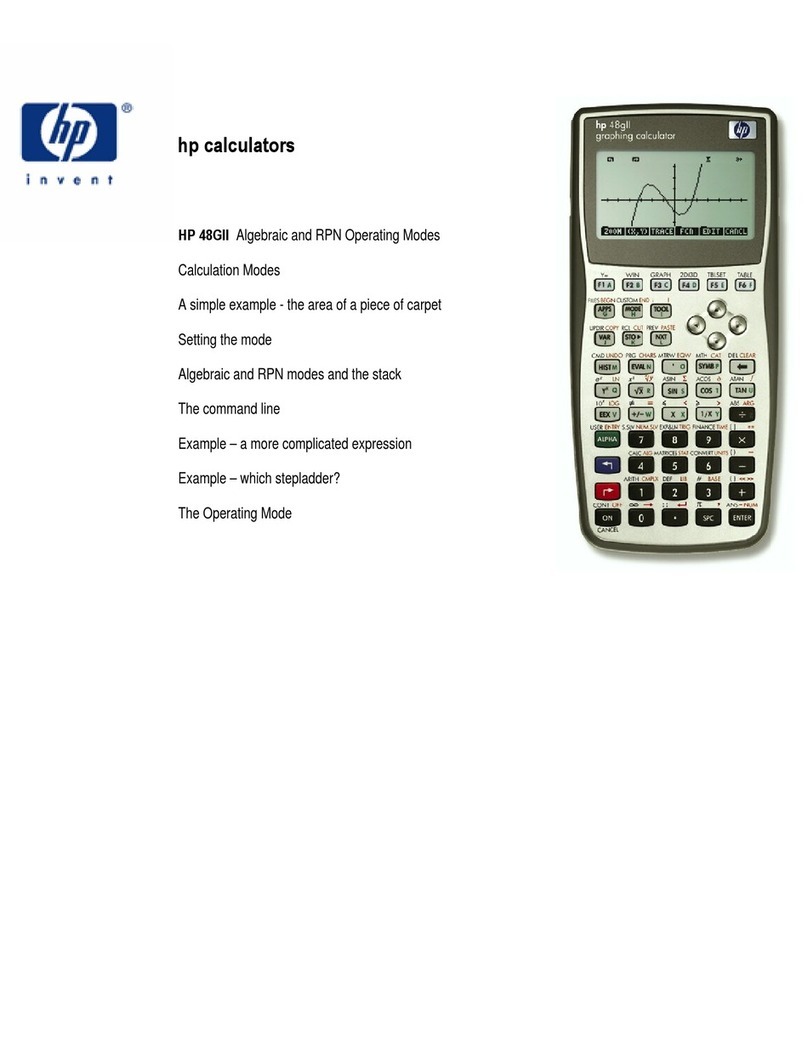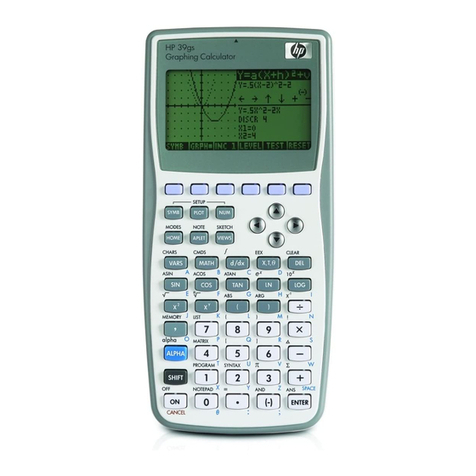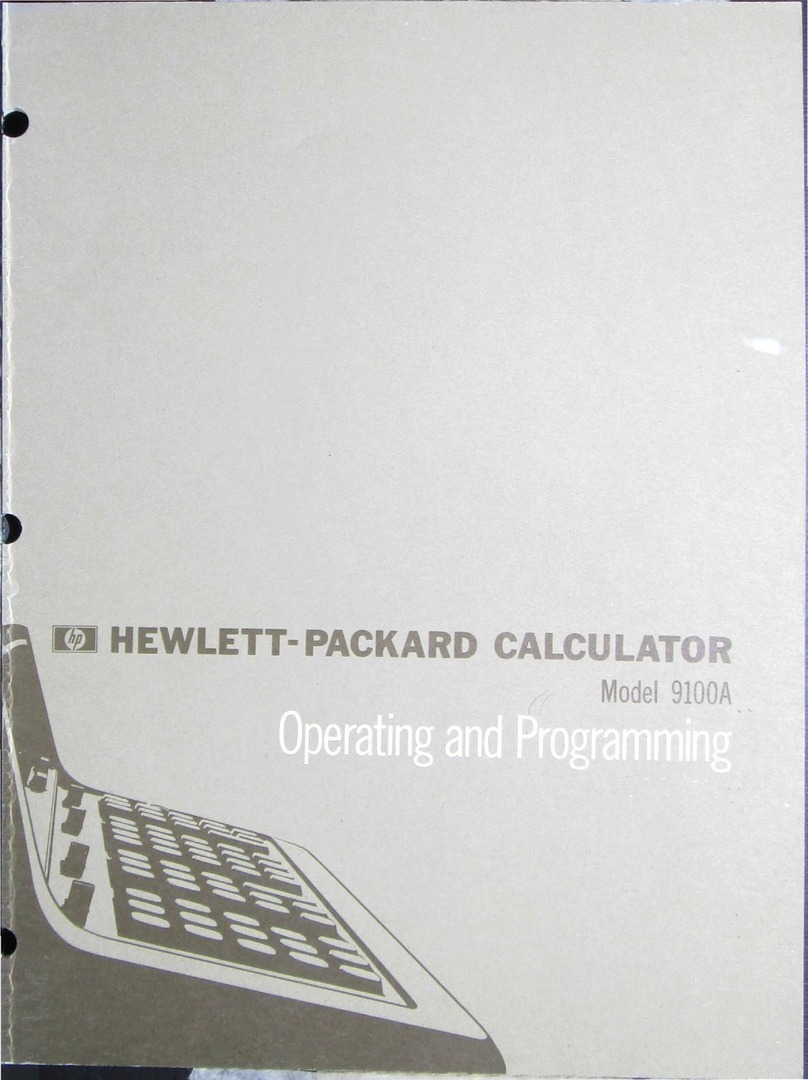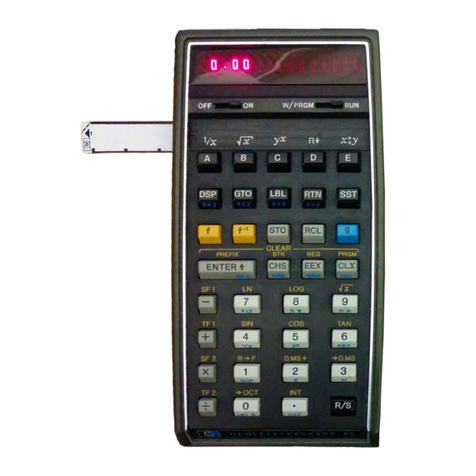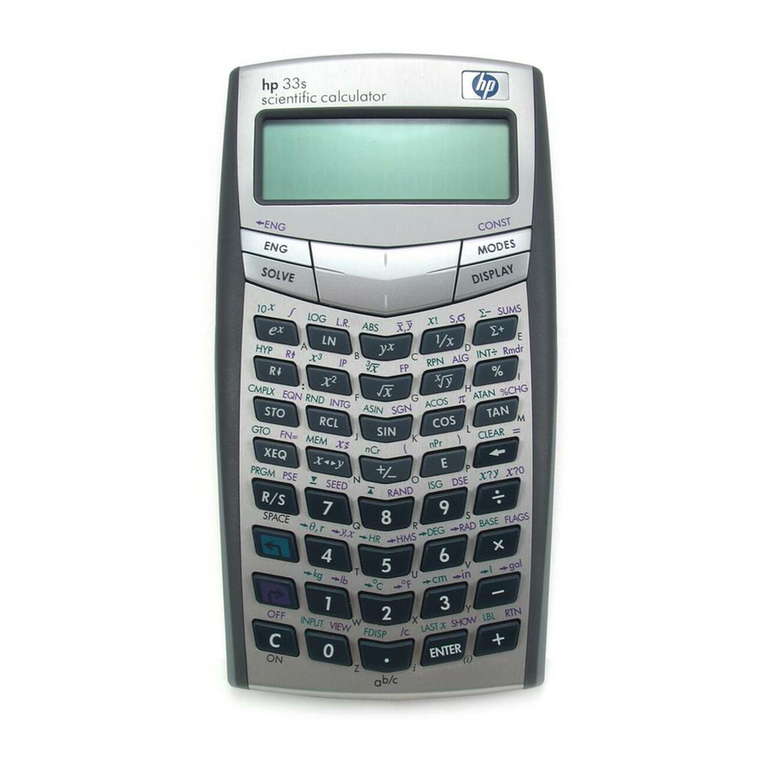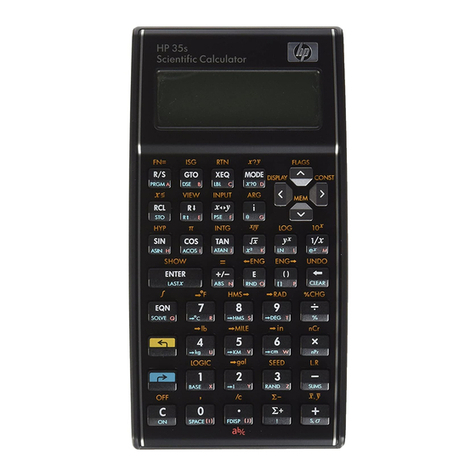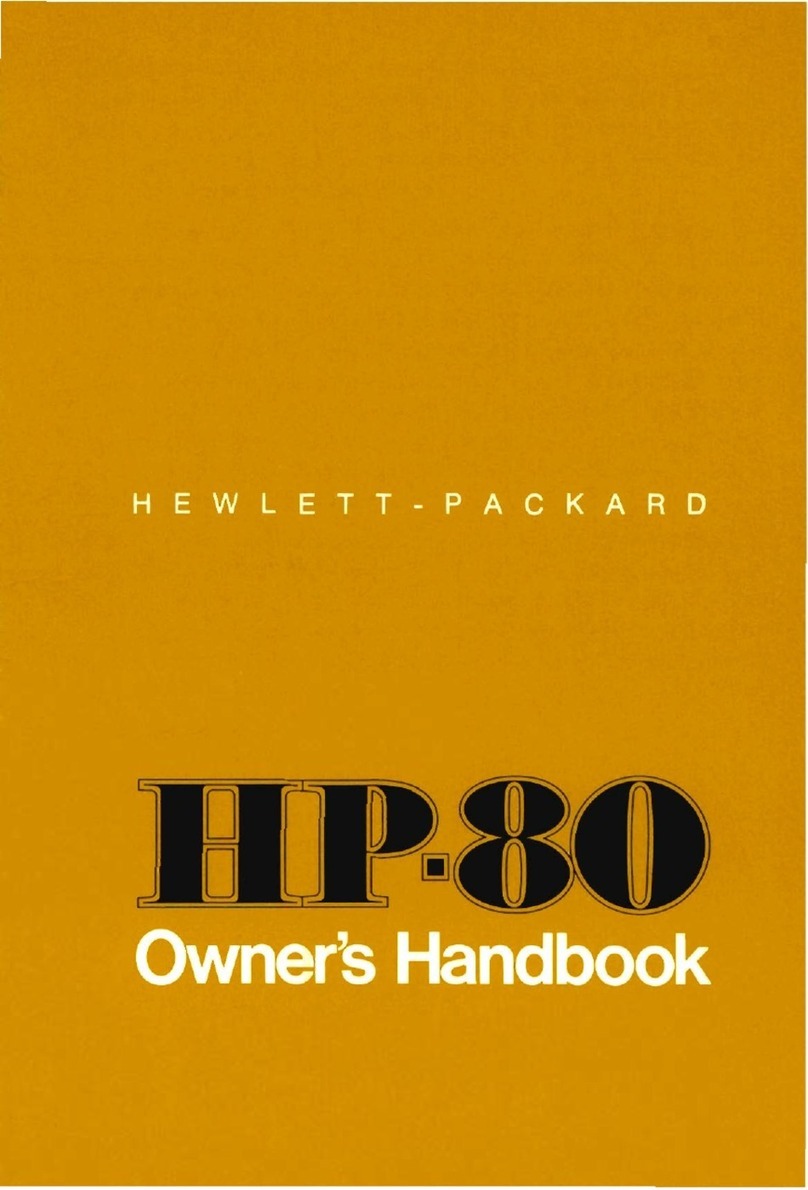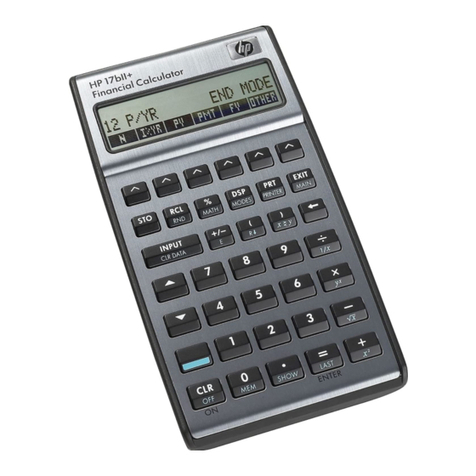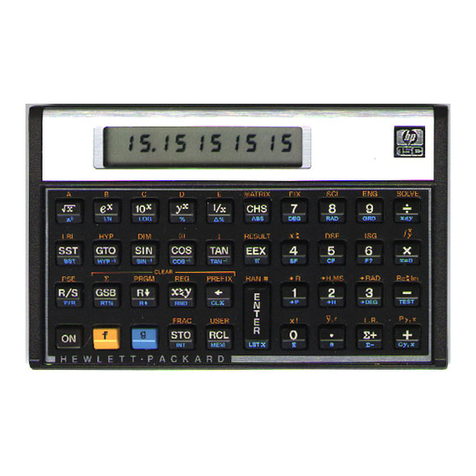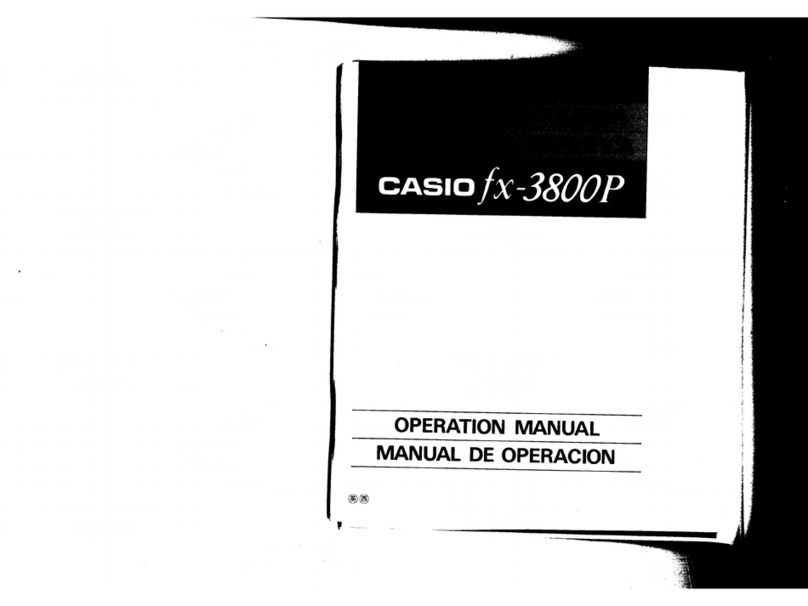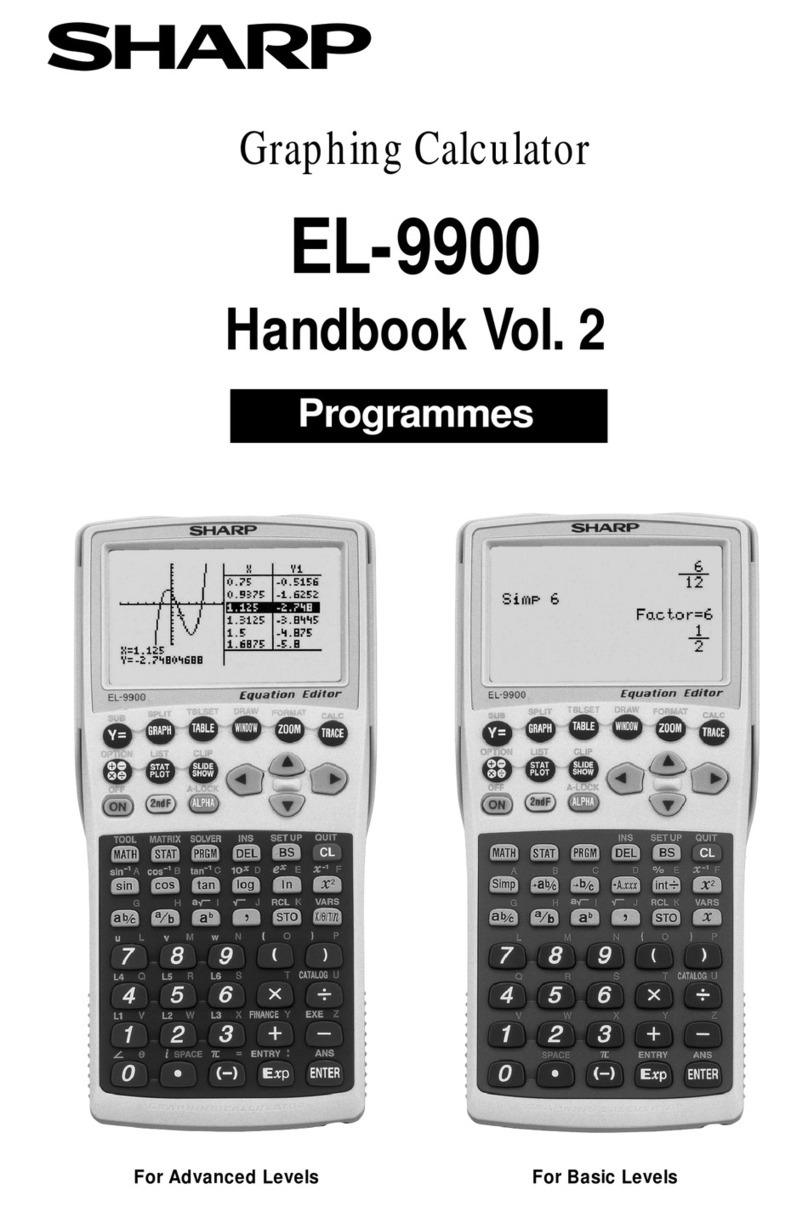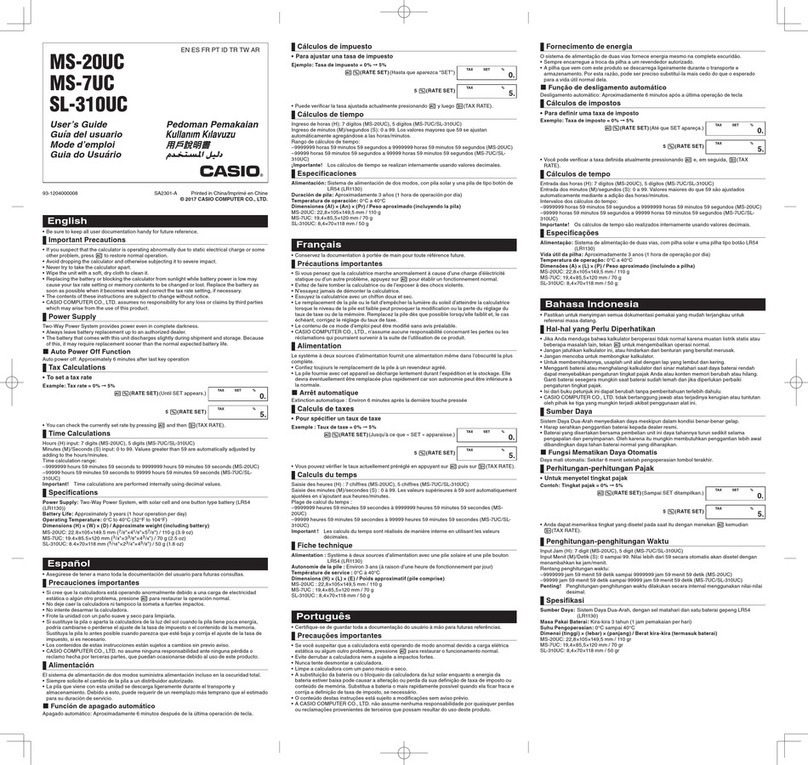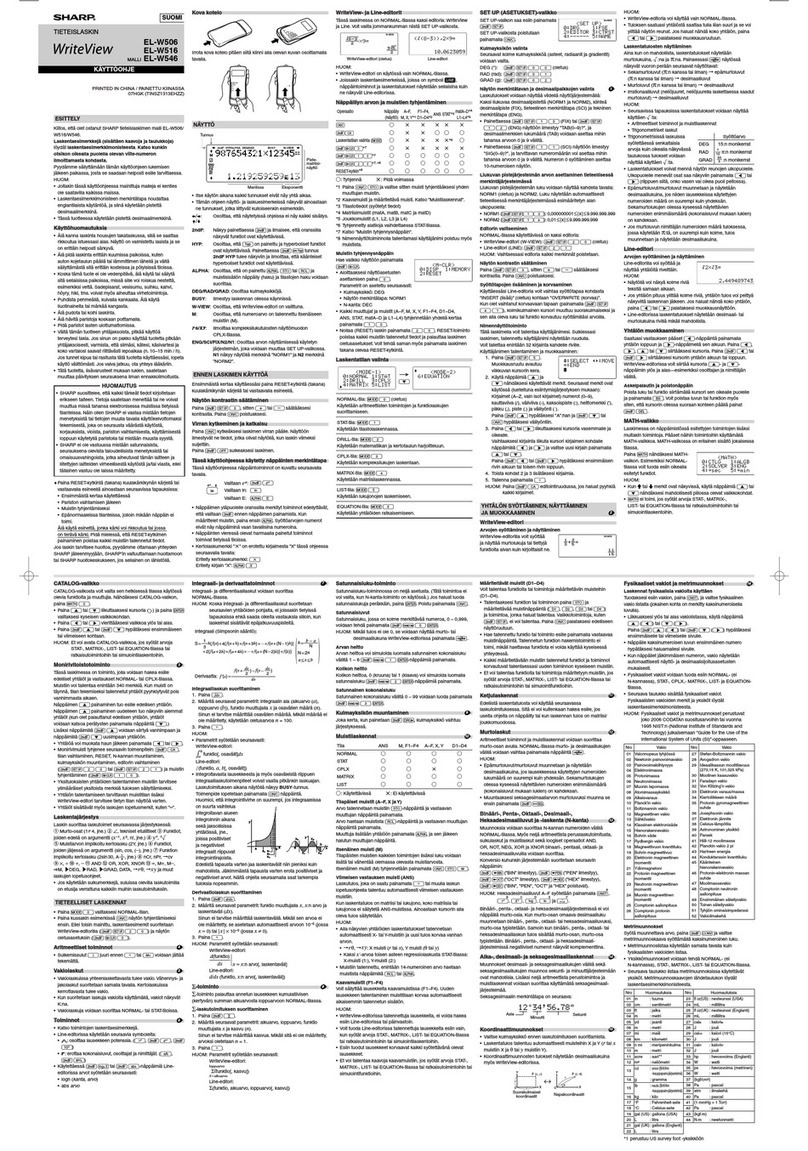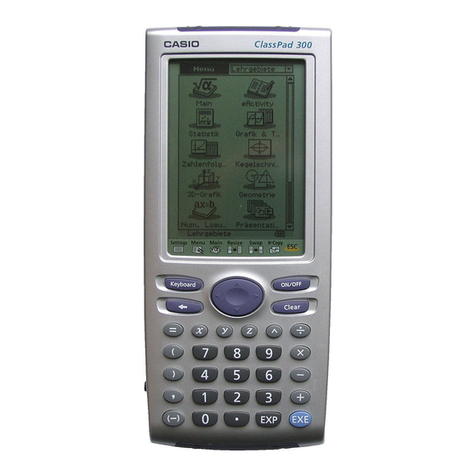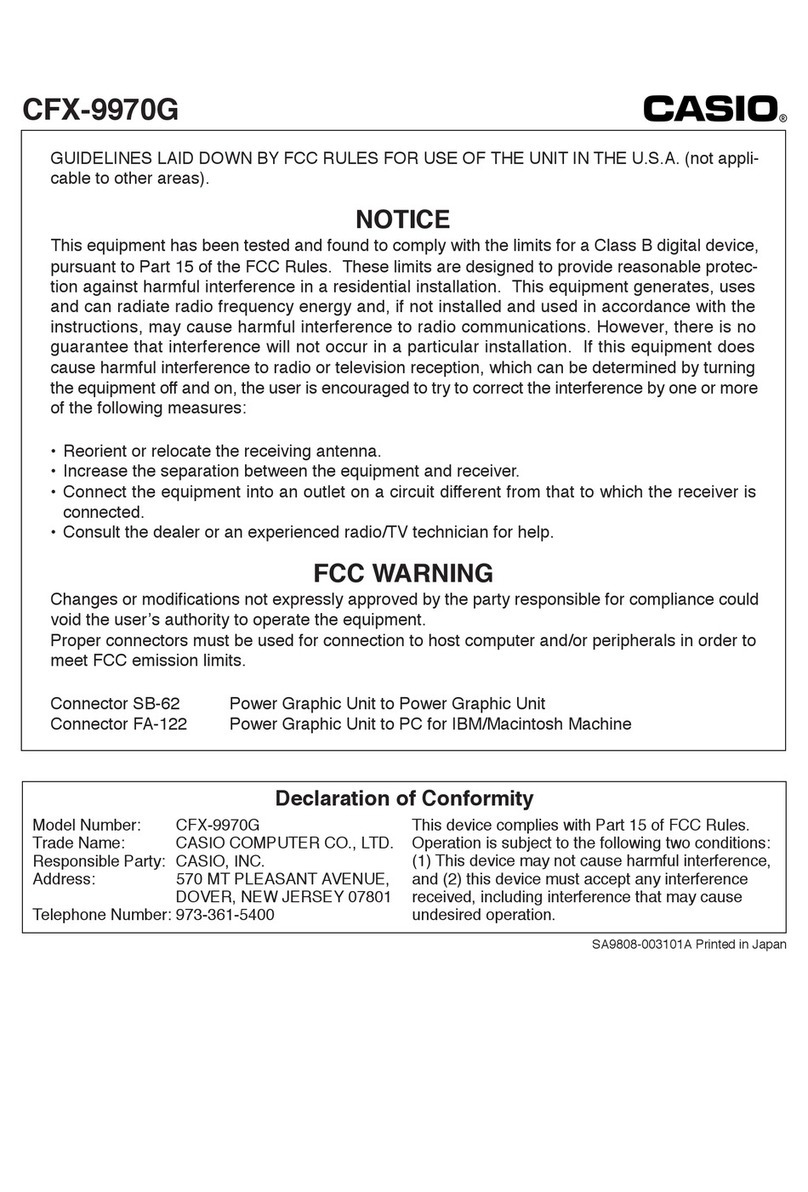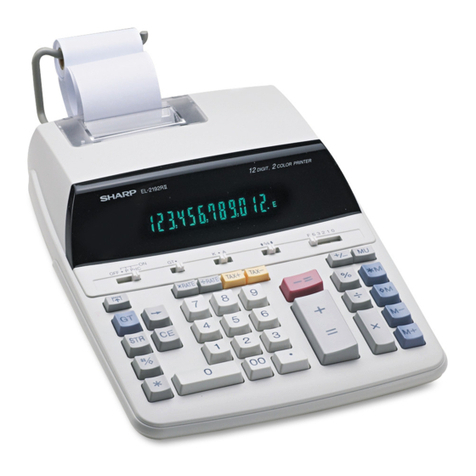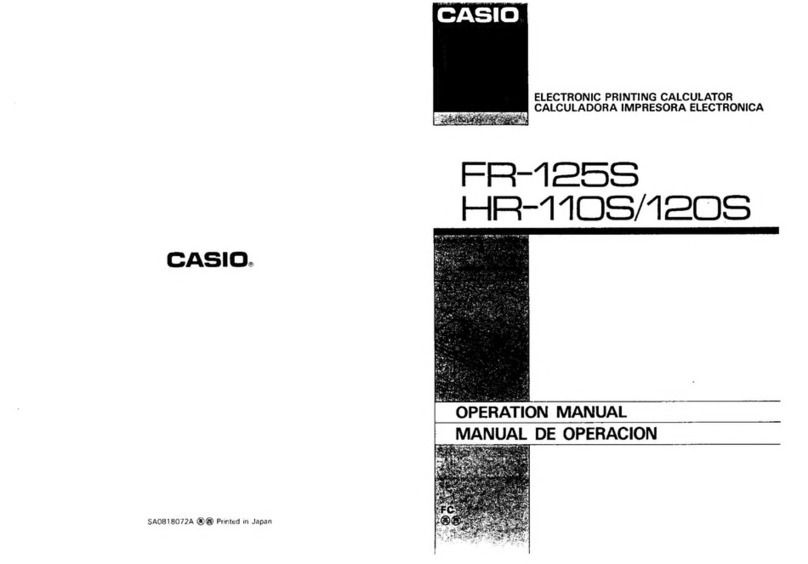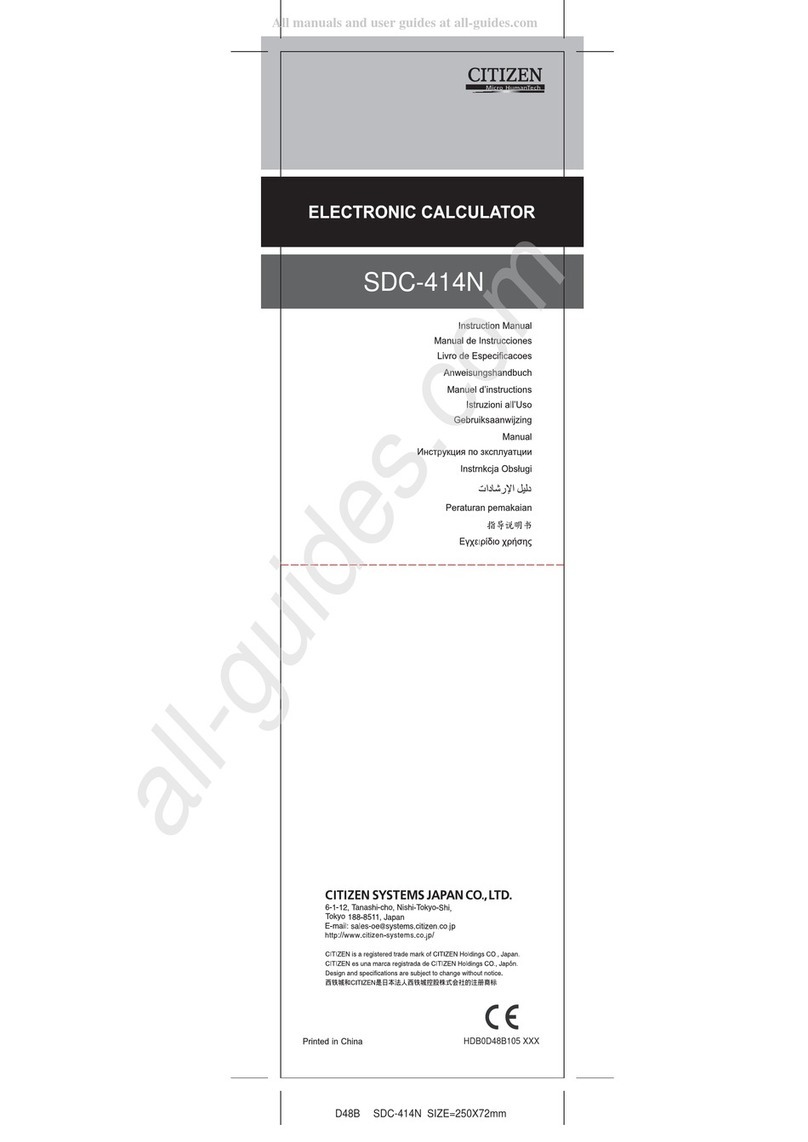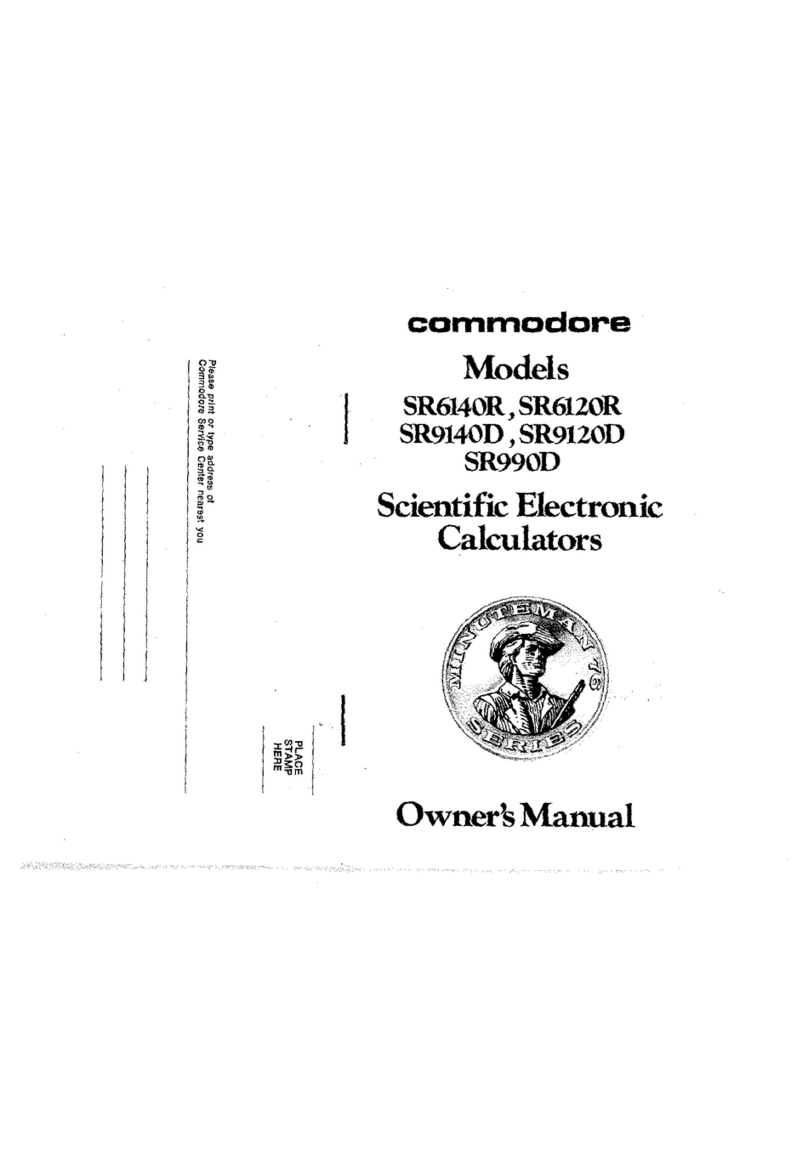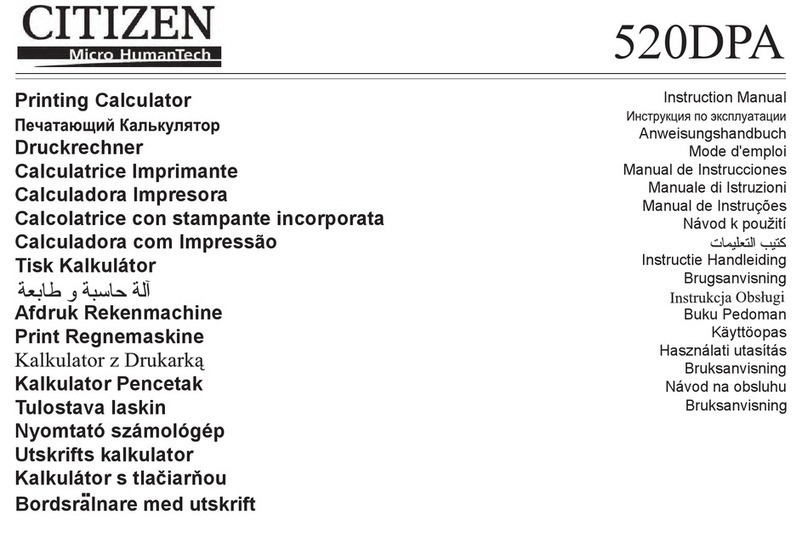
Function Key Index
Function
keys
pressed from the keyboard executeindividual functions as
they
are pressed. Input numbers and answers are displayed. Except
where
otherwise indicated. each function key listed below operates from
the keyboard and as a recorded instruction in a program.
Off~ON
Number
IMANT
i
Mantissa (non-
mPressed before Manipulation
programmable).
function
key.selects
Clear
cmJ
Temporarily dis-
gold
function
print- Clears contents of plays all 10 digits of
eel
above
key
.
stack (X,
y,
Z, T). the mantissa of the
number in the
m
Pressed
before
~
Rolisdown
X-register.
function
key, selects contents
of
stack
Number
Alteration
blue
function printed for viewing in dis-
on
lower
face
of
key
. played X-register.
~
Givesab-
I
13f
'
,..,.1]
(non- @El Exchanges solute value
of
programmable) after number in displayed
QJ
,
fi
.
@,
I]§[], contents of
X- and X-register.
CEJ,
(!ID,
C!!!It
,
Y-registers of stack.
Gill
Leaves
only
@!!l,
or
@§)
@J
Clears integer portion
of
cancels that key. contents of display-
number
in displayed
Olg~
Entry
ed
X-registerto
zero
. X-register
by
!BnBltl Enters a truncating fractional
copy
of
number
Display
Control
portion.
displayed
in
X-
[FfU£:
i
Lea
ves
only
register. Used
to
'EJ
Fixed point fractional portion of
separate numbers. display. Followed
by
number
in
displayed
~
Changes sign a
number
key
. X-register
by
selects fixed point
of
mantissa or notation display. truncating integer
exponent
of
lOin
portion.
displayed X-register.
[!§)
Scientific
I!ID
Enter ex- display. Followed by
Manual
Storage
a
number
key
.
lli2J
Store. FollOW-
ponent. After press- selects scientific
ing. next numbers notation display. ed
by
number
key,
keyed
in
are stores displayed
exponents
of
10.
@
Engineering
number
in storage
o through 9 display. Followed by register specified.
a
number
key,
Also
used
to perform
Digt keys. selects engineering storage register
_Decimal point. notation display. arithmetic.
4
